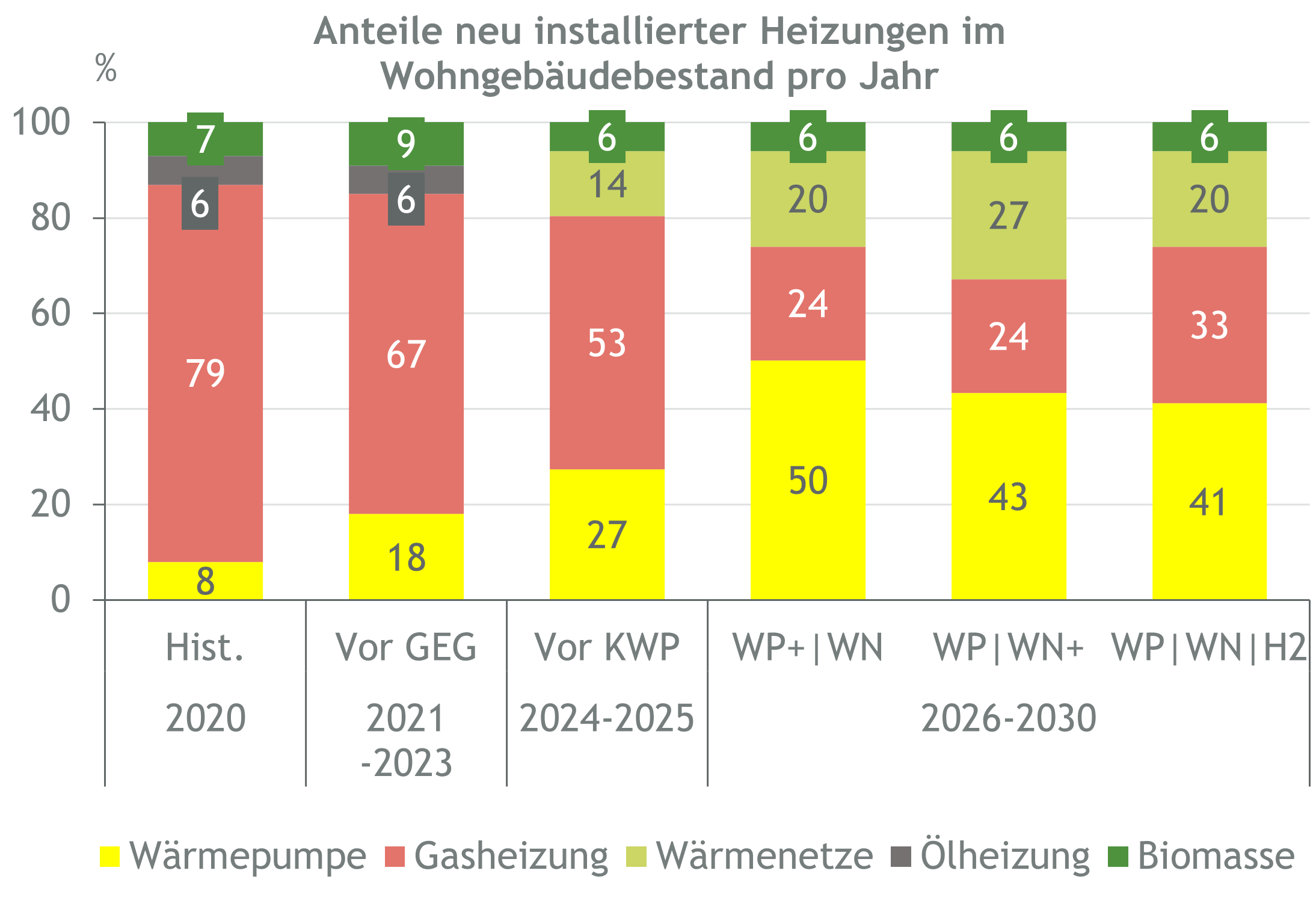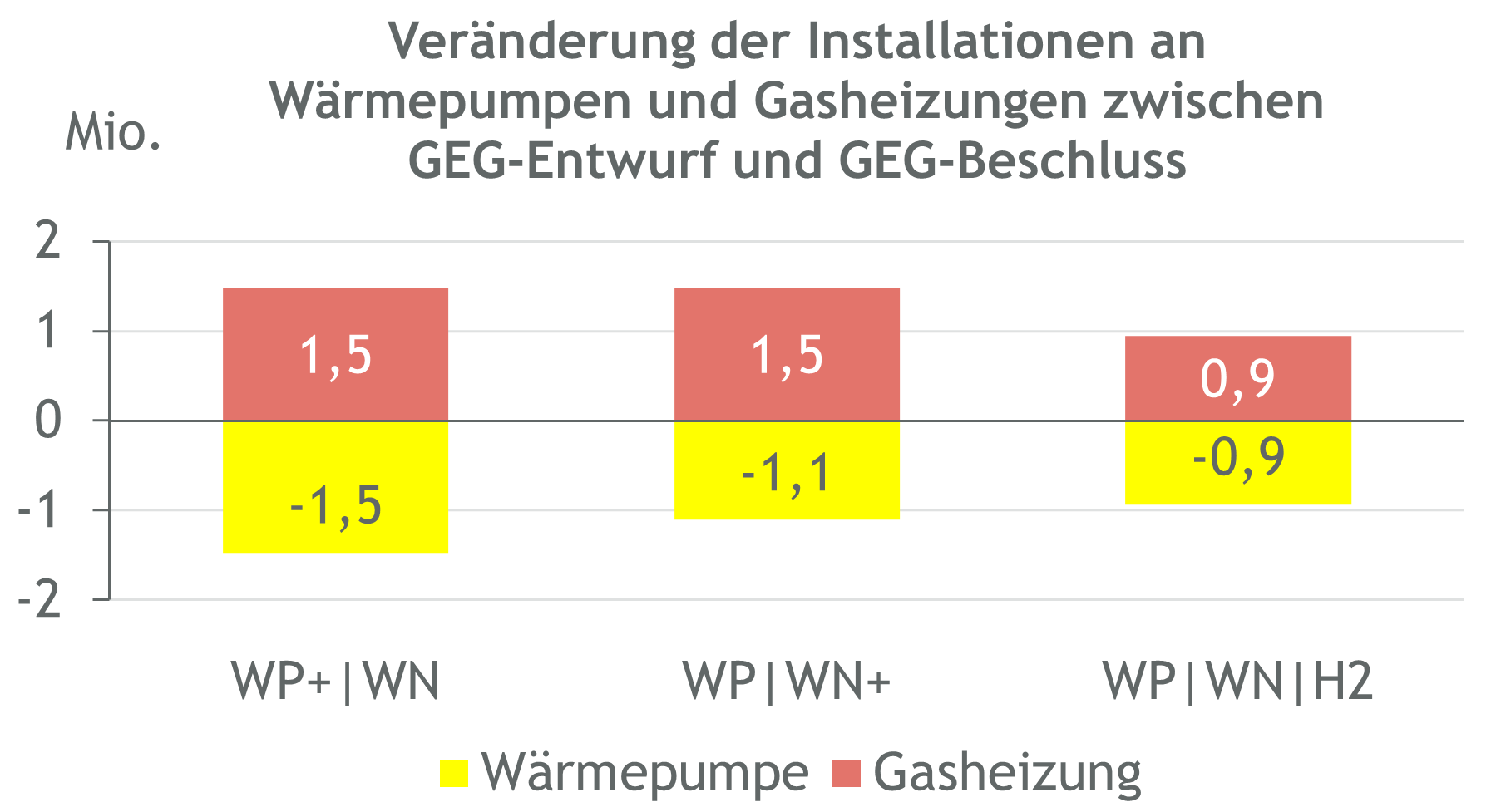
More heat pumps, fewer gas heaters – with the new Building Energy Act (GEG) (as of September 2023), heat pumps could account for 41 to 50 percent of newly installed heaters from 2026, heat networks for 20 to 27 percent and gas heaters for only 24 to 33 percent. Compared with the draft GEG of April 2023, however, this means fewer heat pumps by 2030. This is mainly due to the linking of the deadlines to municipal heating planning.

The Institute of Energy Economics at the University of Cologne (EWI) has analyzed the effects of the GEG decision of September 8, 2023, on the potential development of heating installations in residential buildings up to the year 2030 in three scenarios. The scenarios developed in the EWI analysis “Update: Impact of the Building Energy Act on Residential Buildings” show that the stock of heat pumps as an immediate compliance option of the GEG could increase up to 4.8 million in 2030. The analysis updates scenarios from EWI’s April 2023 assessment of the draft GEG and compares the potential impacts of the adjustments.
Three scenarios project the heating stock in EWI’s building model up to 2030. In the first scenario, heat pumps serve as the primary compliance option, so that they account for about 50 percent of new installations from 2026. In the second scenario, more new heating networks are built beyond the densification of the existing network stock. In the third scenario, more households install hydrogen-capable gas heating systems compared to the other scenarios.

In the scenarios considered, the number of heat pumps would increase from 1.0 million in 2020 to up to 4.8 million in 2030. In the previously analyzed scenarios based on the draft GEG, there could have been up to 6.3 million heat pumps by 2030. “Compared to the cabinet draft, there could be up to 1.5 million fewer new heat pumps in 2030 with the passed GEG,” says Philipp Artur Kienscherf, senior research consultant at EWI, who conducted the analysis together with Philipp Theile. In addition to the absolute increase in heat pumps, the number of district heating connections could also increase to 1.6 in the densification setting or 1.9 million with new heat network construction. The number of gas heating systems would decrease compared to 2020. In 2030, 9.9 million to 10.2 million gas heaters would remain in the scenarios considered.
The comparatively small differences in the scenarios result primarily from the shortened time span between 2026 and 2030, which is associated with the coupling of the deadlines to municipal heating planning. “The long replacement cycles of heating systems slow down the switch to new technologies in existing buildings,” says Philipp Theile, senior research associate at EWI.